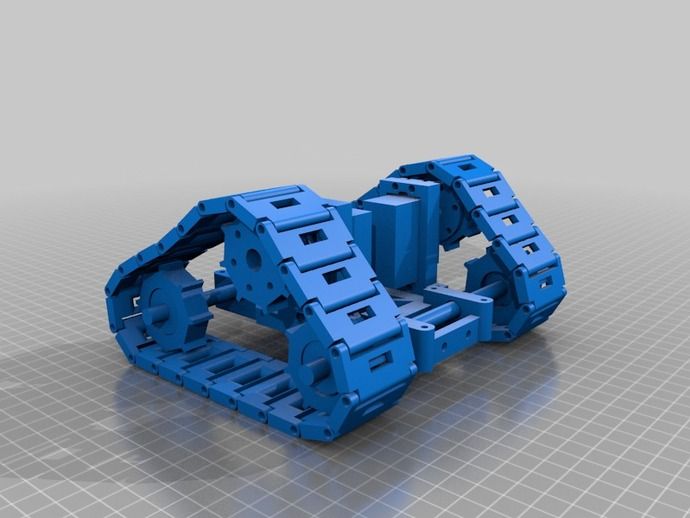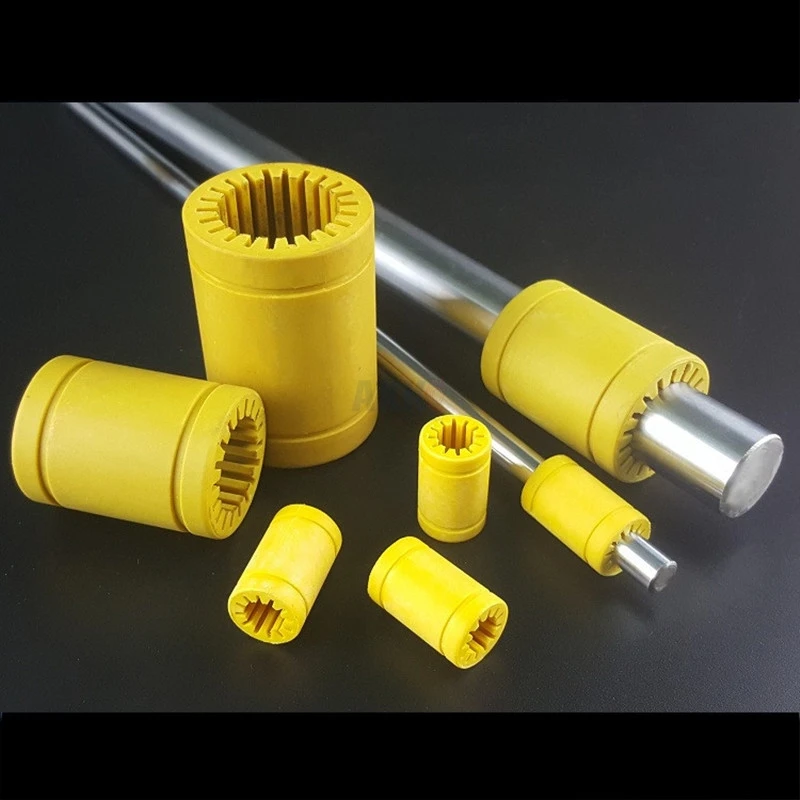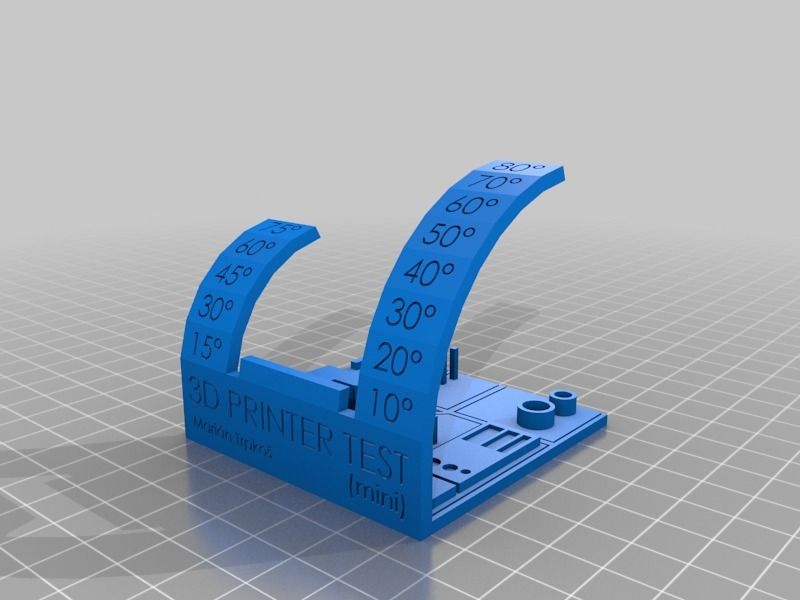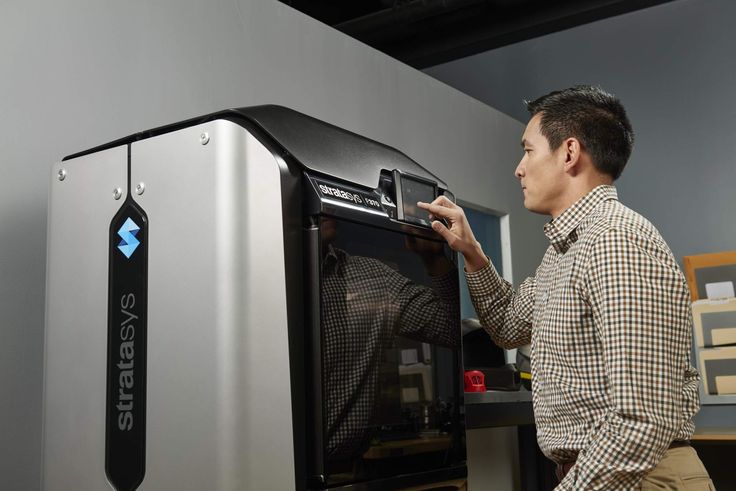3D printer vibration dampeners
Instructions: Build DIY anti vibration damper board for your 3D printer
The singing and rattling of your 3D printer is driving you crazy or is already calling the neighbors into action? Decouple your 3D printer from the ground with a damper board and reduce the printing noise!
The article contains affiliate links / advertising links, these are marked with an asterisk (*).
Why build a damper board for 3D printer?
It’s simple: just to reduce the noise of the 3D printer. It prevents that the vibrations of the 3D printer are being amplified by a resonator. The table or shelf on which the 3D printer is placed is enough as a resonance body, which then amplifies the stepper motor noise many times over.
For my first 3D printer over 10 years ago, I screwed a wooden board directly to the wall in front of my desk. So, the printer’s vibrations were transmitted directly into the wooden panel and from there into the wall, the whirring, rattling, and singing of the stepper motors could be heard in every room of the apartment. The neighbors probably also thought that the world is going to end, but fortunately they couldn’t identify the source of the noises.
What happened? The vibrations of the 3D printer caused the shelf and the wall to vibrate. The wooden board and the wall in turn made the air vibrate, and so the adjoining rooms became resonators that amplified the vibrations even further.
You can think of the whole thing like a guitar: If only a string vibrates without being coupled to the guitar body, it is almost inaudible. If the string is coupled to the body, it causes the body to vibrate, and the volume of the string is multiplied.
Unfortunately, what is wanted with the guitar is unpleasant with the 3D printer.
Reduce the vibrations of the 3D printer and thereby reduce noise
The solution: A damper is needed to isolate the vibrations of the 3D printer and decouple it from the ground.
The most obvious idea was to put foam under the 3D printer, which brought a lot in terms of noise, unfortunately the printer rocked a lot due to the extremely soft bearing. This was neither good for the printer nor for the printed parts. The next experiments were made with a rubber anti-vibration mat for washing machines. These in turn were too hard and did not dampen well enough.
That’s why I started to print my own damper feet with flexible filament. These have the advantage that their flexibility can be adjusted very well by varying the design and the density (infill and number of perimeters).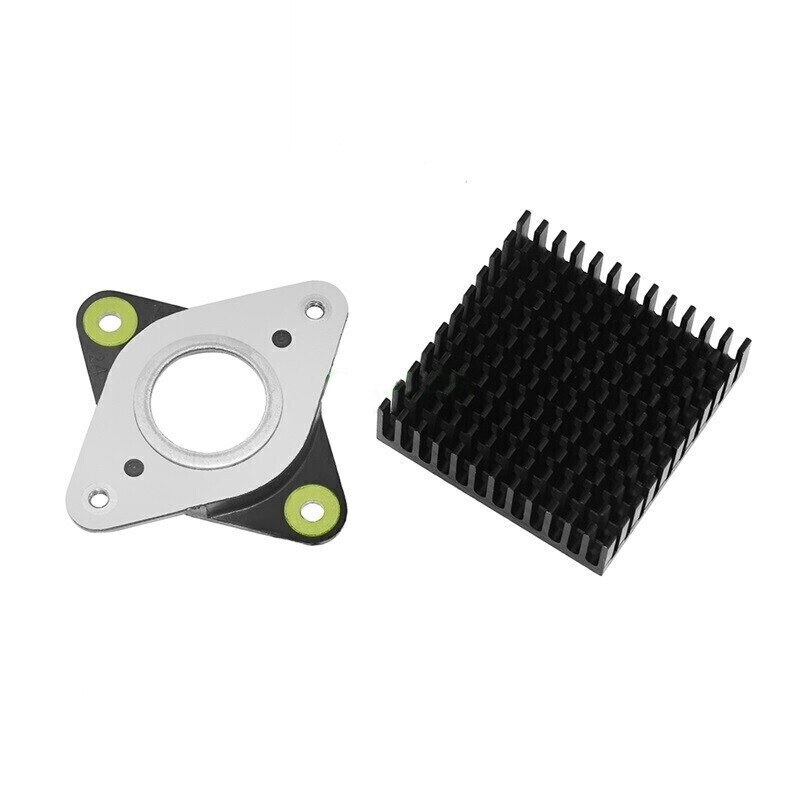 It is important to print the damper feet not too tight and not too soft.
It is important to print the damper feet not too tight and not too soft.
Conclusion: Basically, the softer the dampers, the better the vibration isolation. This result in less noise when printing. At the same time, however, the swinging and the rocking of the 3D printer increase.
What can be done to prevent the 3D printer from swinging too much? The solution lies in an additional weight on the 3D printer. The easiest way to do that is with a damper board to which additional weights are attached.
Why is an additional weight on the damper board an advantage?
An effect that is also used in large production machines also helps with home 3D printers. If an additional mass is coupled to the vibration generator, this reduces the maximum oscillation amplitude and shifts the resonance frequencies.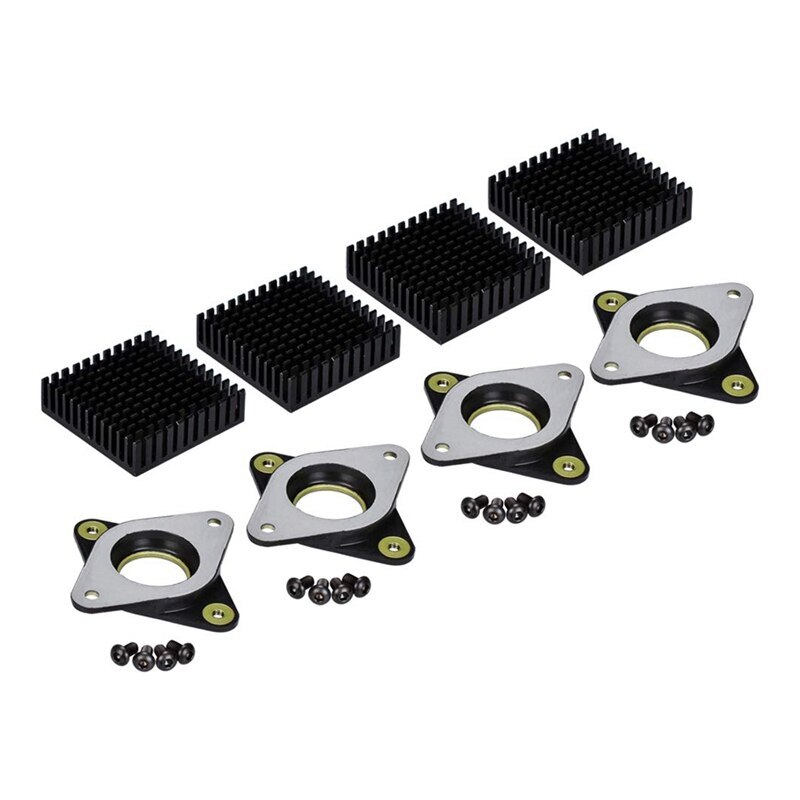
In the case of large machines, it is realized by bolting it to a machine foundation, which reduces the vibration amplitudes compared to machines without a foundation. To prevent the entire hall from vibrating, the machine foundation is then vibration-insulated, i.e., decoupled from the rest of the hall foundation with rubber or special dampers.
Adding weight to the 3D printer does the same thing. The 3D printer is placed on a board that is equipped with additional weights and the board is then decoupled from the ground using damper feet.
On the one hand, this reduces the vibrations in the subsurface (table, enclosure, or shelf), which reduces the printing noise. At the same time the mass of the 3D printer is increased to prevent that it is swinging too much.
DIY 3D printer damper – build it yourself with or without flexible filament
Flex filament (TPE, TPU, etc.) is one of the more demanding 3D printing materials and usually requires a direct drive extruder.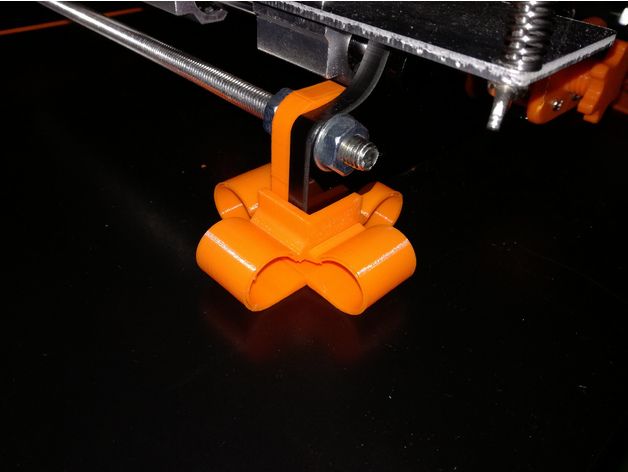 You don’t want to get into it or do you have a Bowden extruder on your 3D printer, that’s no problem. To be able to build a damper board without flexible filament, there is a simple trick: instead of using Flex filament for the damper feet, you can also use squash balls.
You don’t want to get into it or do you have a Bowden extruder on your 3D printer, that’s no problem. To be able to build a damper board without flexible filament, there is a simple trick: instead of using Flex filament for the damper feet, you can also use squash balls.
With squash balls, the aim is to dampen any impact as good as possible to avoid going too fast. It may sound paradoxical, but when it comes to squash, the pros play with balls that hardly bounce at all and absorb a lot of the energy, making them ideal for your damper board. Instead of the damper feet made of flexible TPE or TPU filament, mounts for squash balls made of classic filament are printed.
Damper board with flexible filament damper feetDamper board with squash balls as damper feetFor the Flex filament used, I will give you a few more tips in the 3D print settings to get clean and beautiful 3D printed flexible parts.
Choose different weights with the included weight holders
The project’s 3D print files contain 33 weight brackets of different heights.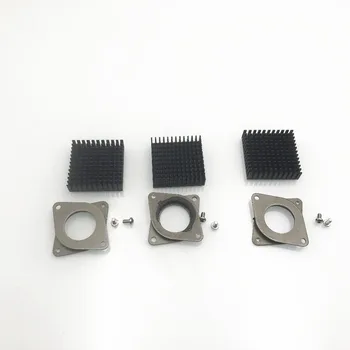 Weights with thicknesses of 8 to 40 mm (in 1 mm steps) can be used.
Weights with thicknesses of 8 to 40 mm (in 1 mm steps) can be used.
Shown in the photo are the brackets with the heights: 8, 17, 25, 33 and 40 mm
Damper board height overview
To be able to accommodate thicker weights and to adjust the dampening effect, four damper feet models of different heights are included in the 3D printed models.
The STL files with damper feet in the lengths L= 30, 35, 40, 45 mm are included in the 3D printing templates.
An important factor for planning is how much space is available and how high the entire substructure can be. With higher damper feet, a good damping effect can be achieved even with relatively stiff flexible filaments, or thicker weights can be attached.
The rendered sketches with dimensions give a quick overview of the height of the damper board in its different versions.
Dimensions of the version with flexible damper feet, where L= 30, 35, 40, or 45 mm and H= 8 to 40 mm in 1 mm incrementsDimensions of the version with squash balls as a damper, where H= 8 to 40 mm in 1 mm increments3D print parts
3D print files of the DIY anti vibration damper board for your 3D printer
In the 3D print files shop you are going to find not only the files for this project but also many other professional DIY projects.
These are purely digital products, you get all the files you need to print the parts yourself in a ZIP folder. It contains the STL files for all required components and variants, additional accessories, as well as templates and installation aids. A total of 39 different 3D print models are included.
- 005700_Flex_Damper_Foot_L##
4 models with lengths L= 30, 35, 40, 45 mm - 005800_Weight_Bracket_H##
33 models for different weights with a height of H= 8 to 40 mm in 1 mm increments - 005900_Squash_Ball_Mount
- 006000_Stencil_Damper
The largest 3D printed part of this project (005900_Squash_Ball_Mount) requires a footprint (X, Y) of 46 x 46 mm, the highest part (005700_Flex_Damper_Foot_L45) is 45 mm high (Z). Any 3D printer with a build space (X, Y, Z) of at least 50 x 50 x 50 mm is suitable for this project.
3D print settings
For all the parts not printed with Flex filament:
- Layer height 0.
 2 mm and 100% infill (rectangular)
2 mm and 100% infill (rectangular)
The following settings have proven useful for the PETG Filament* which was used.
- Nozzle temperature: 250°C (First layer: 240°C)
- Bed temperature: 90°C (First layer: 85°C)
- Perimeter speed: 45 mm/s (First layer: 10 mm/s)
- External and short perimeter speed: 25 mm/s (First layer: 10 mm/s)
- Infill speed: 80 mm/s (First layer: 10 mm/s)
- Top solid infill speed: 40 mm/s
For the 3D print part 005700_Flex_Damper_Foot_L## printed with flexible filament:
- Layer height 0.2 mm, 15% infill (rectangular) and 2 perimeters
Depending on the flexibility of your Flex filament, the damper feet can be printed even softer or harder using less or more infill and number of perimeters. Make sure that your feet don’t get too soft to be able to carry the 3D printer and the additional weights.
Tips for 3D printing flexible filament
Three more tips for printing with flexible (TPE, or TPU) filament:
- Print very slowly
- Very little preload on the extruder gears
- If the flexible filament sticks too much to the print bed – use Kapton (Polyimide) tape
Print very slowly – at only 25 mm/s
The flexible filament simply needs a more time to process, so turn the print speed all the way down.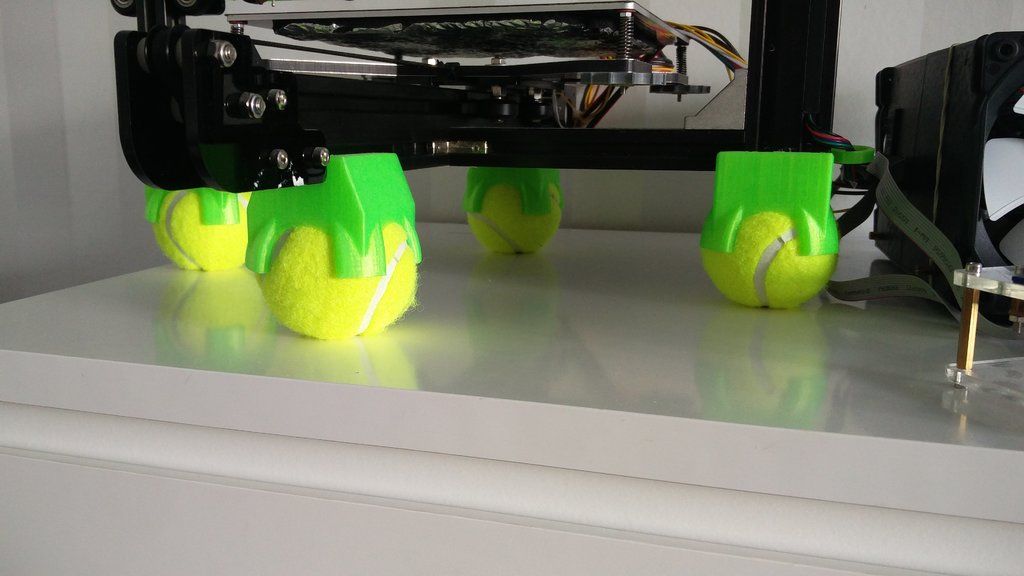
The following settings have proven themselves for the Flex filament Fiberlogy Fiberflex 30D Black* used.
- Nozzle temperature: 240°C (First layer: 240°C)
- Bed temperature: 40°C (First layer: 40°C)
- Perimeter speed: 25 mm/s (First layer: 15 mm/s)
- External and short perimeter speed: 25 mm/s (First layer: 15 mm/s)
- Infill speed: 25 mm/s (First layer: 15 mm/s)
- Top solid infill speed: 25 mm/s
Why only little preload on the extruder gears?
To be able to process the flexible filament with the 3D printer, the preload on the extruder gears must be reduced. If the pressure of the gears on the flexible filament is too great, it wraps itself around the gears.
At first glance, that sounds paradoxical, better printing with very little pressure on the filament?
But since the flexible filament can be conveyed very well with the gears anyway due to its flexibility and stickiness, the problem with this material is the adhesion to the gear. As a result, it can happen that the flexible filament wraps itself around the gears and the printing process must be stopped as a result.
With the Prusa i3 MK3S, I unscrew the M3 cylinder head screw, which is responsible for the preload, until the entire screw head is visible.
What to do if Flex filament sticks very strong on the print plate?
The Fiberlogy flexible filament used here, sticks extremely strong to the PEI-coated print bed, so here is a tip for easy detachment: to avoid the flex material sticking to the print plate, simply stick a strip of Kapton (Polyimid) tape* on the build plate before printing.
Of course, only where the printed parts should arise later. Since the area to be printed is now closer to the nozzle due to the tape, increase the first layer in the slicer to 0.4 mm. For more useful tips and help see also the article: The best 3D printing tools and accessories
Used 3D printing filament and 3D printer
3D printer used: Prusa i3 MK3S* with a standard 0.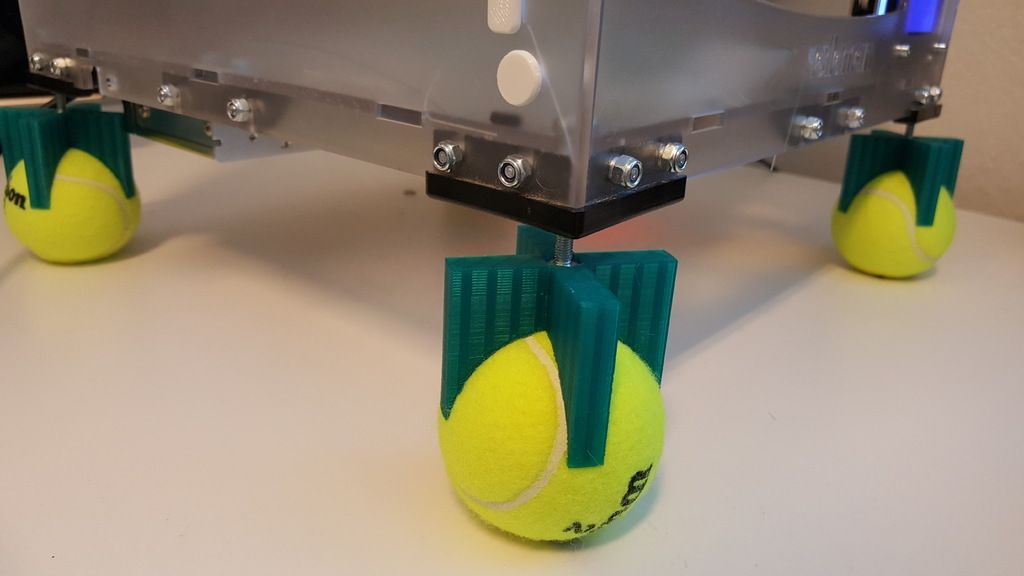 4 mm nozzle
4 mm nozzle
3D printing filament used: In this guide Prusament PETG Jet Black* was used for all solid parts and Fiberlogy Fiberflex 30D Black* for the flexible damper feet.
With the selected settings, approx. 35 g PETG filament and 23 g FLEX filament are printed for the 3D printed parts of the damper board.
With the PETG filament used (29.90 EUR/kg) and the FLEX filament used (47.05 EUR/kg), the filament material costs are approx. 2 EUR per damper board (with flex damper feet and weight holder with a height of 17 mm).
The total printing time for all required components is approx. 7 hours. To calculate the total printing time, all printing times are added together, with the entire quantity of a 3D printed component being printed at once.
A PETG filament is recommended because of the higher stability and lower distortion. The parts can also be printed with ABS or ASA, but these place higher demands on the 3D printer and the operator. The widely used PLA is not recommended, because technically more demanding parts are not stable enough due to the more brittle nature of this material and the lower layer adhesion.
The widely used PLA is not recommended, because technically more demanding parts are not stable enough due to the more brittle nature of this material and the lower layer adhesion.
Bill of materials: Needed purchased parts to build the damper board
- 1 pc Wooden board 400 x 300 mm plywood thickness = 12 mm black* (approx. 17 EUR / pc) – pay attention to the space requirements of the 3D printer and the additional weights when choosing the board dimensions
- 8 pcs Wood screws with countersunk head Torx 4×20 mm* (approx. 10 EUR / 200 pcs)
- 2 pcs Steel plate – weight for weight jacket 4 kg* (approx. 39 EUR / 2 pcs) – other weights can also be used
The total cost of the purchased parts comes to around EUR 50 if the wooden panel is ordered directly from auprotec.com, without shipping costs and if only the costs for the parts required for a damper board are added up.
If the weights, which make up most of the costs, are not purchased – because there are still a few old dumbbell weights lying around in the basement, the costs for the purchased parts can be reduced to around EUR 12.
Optional, if you want to use squash balls for the dampers instead of flexible filament:
- 4 pcs Squash balls – double yellow* (approx. 9 EUR / 2 pcs)
Alternative purchased parts
Screws are usually much cheaper in the hardware store and, above all, can be bought in exactly the required quantity.
The wooden plywood board is also cheaper directly from auprotec.com, or you can simply have it cut to size at a hardware store. The panel thickness should not be less than 12 mm, the brackets and feet are designed in such a way that the 4×20 mm wood screws used penetrate a maximum of 10 mm deep into the panel. Thinner plates are also not stable enough for the 3D printer and the weights.
For planning the panel dimensions, consider the space required by your 3D printer and the additional weights to be attached. The 400 x 300 mm board fits very well for the additional weights used and offers enough space for a Prusa i3 MK3S or a Prusa MINI.
Instead of the linked steel plates, various other weights can be used, from weight plates to simple steel plates or even thin stone plates. In the 3D print files are many different weight bracket models with different heights. Simply measure the thickness of the weight and select the weight bracket STL file with the next largest height.
Required tools
As always, a new project is the best excuse to buy new tools ;), not all are required but some help save some time.
- Cordless screwdriver*
- Standard bit set with Torx*
- Sandpaper 240*
- Torx key set*
- Wood drill bit 2 mm*
- Marker pen*
Assembly instructions: Build a DIY damper board for your 3D printer
The step-by-step instructions follow to build the damper board for the 3D printer yourself, please read and observe the safety guidelines for assembly.
Safety Guidelines
Safety first! Read and follow the assembly instructions and the operating manual!
Read the entire assembly instructions and operating manual carefully and follow the instructions and safety warnings. If anything is unclear, simply contact support ([email protected]).
These instructions are only intended for persons of legal age (over 18 years old). If you lack knowledge in handling the tools or processes that occur, then it is essential to seek the help of trained persons. The preparation and assembly of the project is at your own risk.
Legend: Warnings and Symbols
This symbol indicates a hazard that will result in serious injury or death if the instruction is not followed.This symbol indicates a hazard that could result in serious injury or death if the instruction is not followed.This symbol indicates a danger which can lead to minor injuries if the instruction is not followed. This symbol indicates possible damage to the project or the environment if the instruction is not followed.General safety instructions for assembling the project
Wear protective goggles to protect your eyes during all processing steps that can produce chips (sawing, drilling).
Wear assembly gloves to protect your hands during all processing steps in which saws or knives are used. Do not wear gloves when drilling, there is a risk of being drawn into the drill.
When printing parts, sharp edges can occur (usually on the first layer), there is a risk of cuts. These edges must be deburred.
Step 1: Preparing the Plywood Panel
To make it easier to assemble the feet and weight brackets later, it is best to drill all the necessary pilot holes right away.
Required 3D printed parts
- 1 pc 006000_Stencil_Damper
Layer height 0.2 mm and 100% infill (rectangular)
- 4 pcs 005800_Weight_Bracket_H##
Choose the right weight bracket for your weights here. To do this, measure the thickness of your weights and use the next larger bracket. The height of the weight bracket corresponds to the weight height to be held. The total height of the bracket is calculated by adding additional 3 mm.
Height H= 8 to 40 mm in 1 mm increments
For the steel plates used in these instructions, weight brackets with a height of 17 mm are used here.
Layer height 0.2 mm and 100% infill (rectangular)
Be sure to print the brackets with 100% infill and a mechanically robust filament (e.g.: PETG, ABS, ASA).
Preparation of the wooden panel
If the edges of the panels are sharp, simply sand them off a little with fine sandpaper to deburr them.
Examine the panel and decide which side should show upwards later (the one with the more beautiful surfaces and edges).
The pilot holes for the feet are set on the underside of the plate. It is not important whether the flexible damper feet or the squash ball holder are attached later. Always measure 20 mm from both edges. If you have printed out the stencil, it’s super simple.
Position the stencil in the corners and mark the pilot hole through the hole of the stencil.
A marker pen or a wood screw can be used here.
Then place the intended additional weights on the underside. Make sure that they are not too close to the damper feet or squash ball mounts, so that they can be screwed on later without any problems.
Place the selected weights as centrally as possible to distribute the additional mass evenly over the damper feet.
Place the weight brackets on the weights and use a wood screw to mark the pre-drilling point through the hole of the brackets.
Repeat this for the chosen number of weight brackets, in this case 4 pieces are enough to fix the steel plates.
When all markings have been made, remove the stencil and the weights.
Pre-drill about 9 mm deep at all 8 markings with a 2 mm wood drill bit, be careful not to drill through the wooden board.
Tip: To do this, cover the wood drill bit with adhesive tape at 9 mm depth (for the selected 12 mm wood board).
The board is now ready for mounting the shock feet and weights.
Step 2: Attach 3D printed brackets and damper feet
In this step, the flexible filament damper feet or the squash ball mounts, and the weights are attached on the damper board.
Required purchased parts
- 8 pcs Wood screws with countersunk head Torx 4×20 mm
- 2 pcs Steel plate – weight for weight jacket 4 kg
Alternatively, use other weights that can be easily attached to the wooden board using the weight brackets.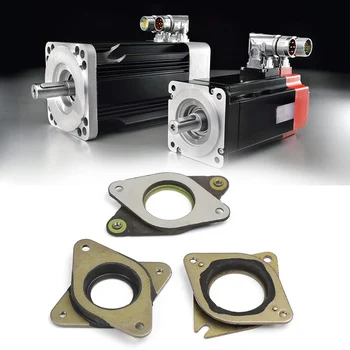
For the variant without Flex filament:
- 4 pcs Squash balls – double yellow
Required 3D printed parts
- 4 pcs 005700_Flex_Damper_Foot_L##
STL files with the lengths L= 30, 35, 40 and 45 mm are available. On the one hand, the choice depends on how much space is available and how high the chosen weights are. On the other hand, how strong the damping effect should be.
With the Fiberlogy Flex filament used, the damper feet were printed with a height of 30 mm and the following settings were used: layer height 0.2 mm, 15% infill (rectangular) and 2 perimeters.
The infill and the number of perimeters depends on the flexibility of the flexible (TPE or TPU) filament used and on the total weight of the 3D printer and the additional weights. The basic rule is: as flexible as possible, but enough to stably support the total weight.
It is essential to check the flexible damper feet before start-up. Execute a test print to check whether they are mechanically stable enough.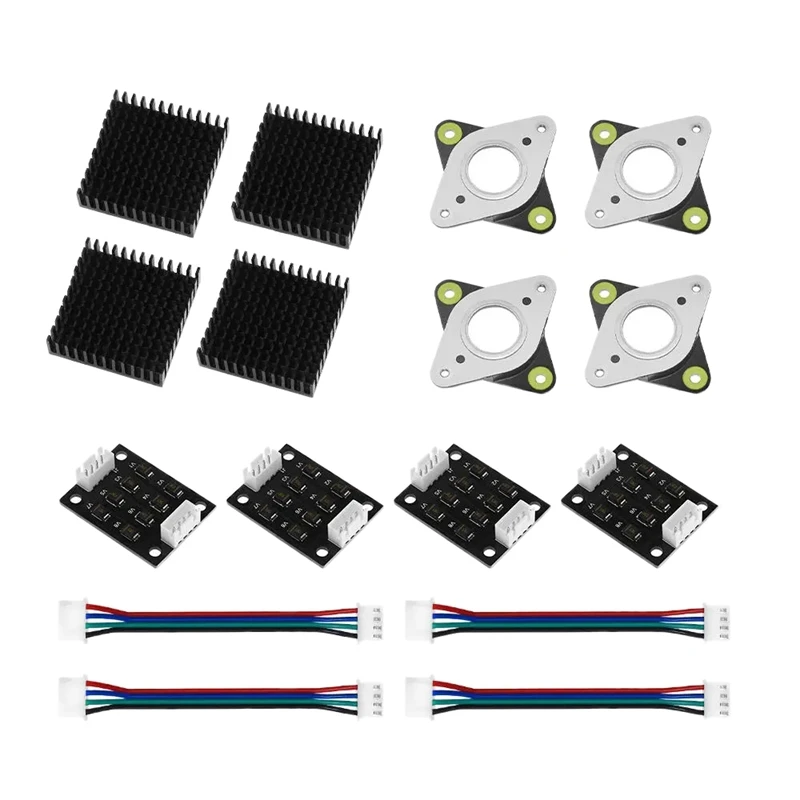 If not, print them with more infill and/or perimeters.
If not, print them with more infill and/or perimeters.
For the variant without Flex filament:
If you want to avoid printing with flexible filament, the squash ball mount is printed with PETG or another mechanical robust filament. The squash balls then later provide the necessary damping effect, which is why no flexible filament is required in this variant.
- 4 pcs 005900_Squash_Ball_Mount
Layer height 0.2 mm and 100% infill (rectangular)
Be sure to print the mounts with 100% infill and a mechanically robust filament (e.g.: PETG, ABS, ASA).
Installation of the damper feet
The four damper feet are fixed with the 20×4 mm wood screws.
Put the wood screws through the hole in the damper foot and screw them into the outer pilot holes of the wooden board.
It is important not to over-tighten the screws. Depending on the flexibility of the damper foot, it will be squeezed too much, and the screw will protrude out of the top of the wooden panel. It is best to work step by step, tighten the screw a little, then test if the damper foot is fixed well enough. If not, then repeat until the damper is securely bolted to the plate.
Perform this for all four damper feet.
Assembly of the squash ball mounts and the squash balls as damper feet
For the variant with the squash balls as a damper, the mounts are installed instead of the flexible damper feet.
If the squash ball mounts are used, then screw the squash ball holders to the plate with the 4×20 mm wood screws. Aligning the support bars at a 45° angle to the wooden board edges.
Perform for all 4 mounts. Then insert the squash balls into the mounts. The balls are going to stay there even is the board is flipped afterwards, because of the mount’s design.
Mounting of the vibration reducing weights
Then the weights are put on the wooden panel and the weight brackets are positioned.
Insert the 4×20 mm wood screws through the holes in the weight brackets and then screw them into the pilot holes you drilled in Step 1.
After fixing the last weight bracket, check if the weights are held securely.
Check if the weights are held securely and cannot fall out of the brackets.
If the weights are not held securely, screw them to the wooden board with additional weight brackets or use other weights.
The damper board is now ready for the first test. In the next step, the 3D printer is positioned, and the setup is thoroughly tested.
Step 3: Position and test the 3D printer
Finally, the 3D printer is placed on your damper board and a few test prints are performed to check whether everything is working properly.
Place the 3D printer in the middle of the damper board.
Then check the weight brackets and damper feet.
Carry out the following checks before start the 3D print process / operation:
- Is there enough space between the weight brackets and the ground?
- When the damper board vibrates, how do the damper feet react – are they stable enough?
If the damper feet buckle or deform too much, do not use the damper board, but print the feet again with more infill and/or more perimeters.
Congratulations you can start the first test prints and enjoy the reduced background noise 🙂
Always pay attention to whether the 3D printer slips or shifts on the damper board during printing. If this is the case, then fix the 3D printer on the damper board, for example with double-sided adhesive tape.
Also pay attention to how the damper feet behave, do they deform too much or are they too stiff and transmit too many vibrations? Depending on this, they can be adjusted by variating the infill and/or the number of perimeters to be more rigid or more flexible.
Were all checks successful? Congratulations on building your DIY damper board!
Before final operation, be sure to read and follow the operating manual of the DIY anti vibration damper board and the safety instructions given there!
Below are more photos of the finished DIY damper board for your 3D printer, with flexible damper feet and with the squash ball dampers.
Disclaimer
The instructions and the associated files are an inspiration of Ingenieurbüro Dr. Janko GmbH to build this project yourself. Since Ingenieurbüro Dr. Janko GmbH has no way of checking and influencing the required quality of the printed components and purchased parts as well as the quality of the assembly and the correct functioning of the project or if any inadmissible changes and modifications to the project has been made, Ingenieurbüro Dr. Janko GmbH accepts no liability for functionality, stability or damage incurred by the project.
Creality NEMA 17 Vibration Damper | 3D Prima
Creality
0 Reviews
Incl. VAT excl. Shipping
Wish list
Questions about the product
Questions about the product?
Expect a delivery time a few days longer than usual. We will handle your order as soon as possible, but we can't guarantee delivery date during the Christmas holidays.
Shipping charges are based on the product's total weight and shipping method chosen.
Exact shipping charge is presented at checkout when you select shipping methods and your country. No other hidden costs.
Free shipping for all EU orders above EUR 100!
Fast delivery
Our goal is that all orders placed before 12:00 are shipped out from us the same day if the products are in stock.
All items shown with “in stock” status are in stock in our own warehouse for immediate delivery.
Delivery within EU will be shipped by FedEx, UPS, International tracked mail. You choose method in the checkout.
Delivery time will be around 2 - 6 days to most European countries.
Worldwide delivery around 4 - 7 days.
You will receive and mail from us with the tracking nr of the parcel as soon as we have shipped your order.
Free shipping for all EU orders above EUR 100!
Below you can see delivery time for European countries.
| Country | Delivery Time in Days | Free Freight over EUR 100 order |
| Albania | 4 | No |
| Andorra | 3 - 5 | No |
| Armenia | 4 - 6 | No |
| Austria | 2 - 3 | Yes |
| Azerbaijan | 4 - 6 | No |
| Belarus | 4 - 6 | No |
| Belgium | 2 - 3 | Yes |
| Bosnia & Herzegovina | 3 - 4 | No |
| Bulgaria | 3 - 5 | Yes |
| Croatia | 4 - 5 | Yes |
| Cyprus | 4 - 5 | Yes |
| Czech Republic | 3 | Yes |
| Denmark | 2 | Yes |
| Estonia | 3 | Yes |
| Finland | 2 | Yes |
| France | 2 - 4 | Yes |
| Georgia | 4 - 6 | No |
| Germany | 2 | Yes |
| Greece | 3 - 4 | Yes |
| Hungary | 3 - 4 | Yes |
| Ireland | 3 - 4 | Yes |
| Italy | 2 - 4 | Yes |
| Kosovo | 3 - 4 | Yes |
| Latvia | 3 - 4 | Yes |
| Liechtenstein | 2 - 4 | Yes |
| Lithuania | 3 - 4 | Yes |
| Luxembourg | 2 - 3 | Yes |
| Macedonia | 3 - 4 | Yes |
| Malta | 4 - 5 | Yes |
| Moldova | 4 - 6 | No |
| Monaco | 3 - 4 | Yes |
| Montenegro | 4 - 5 | Yes |
| Netherlands | 2 | Yes |
| Norway | 2 | Yes |
| Poland | 3 - 4 | Yes |
| Portugal | 5 - 6 | Yes |
| Romania | 3 | Yes |
| Russia | 4 - 6 | Yes |
| San Marino | 4 | Yes |
| Serbia | 3 - 5 | Yes |
| Slovakia | 3 | Yes |
| Slovenia | 3 | Yes |
| Spain | 3 - 5 | Yes |
| Sweden | 1 | Yes |
| Switzerland | 4 | Yes |
| Turkey | 4 - 6 | No |
| Ukraine | 4 - 6 | No |
| United Kingdom | 3-6 | No |
Shipping charges are based on the product's total weight and shipping method chosen.
Exact shipping charge is presented at checkout when you select shipping methods and your country. No other hidden costs.
Free shipping for all EU orders above EUR 100!
Fast delivery
All orders placed before 12:00 are shipped out from us the same day if the products are in stock.
All items shown with “in stock” status are in stock in our own warehouse for immediate delivery.
Delivery within EU will be shipped by FedEx International Economy.
Delivery time will be around 2 - 6 days to most European countries.
Worldwide delivery around 4 - 7 days.
You will receive and mail from us with the tracking nr of the parcel as soon as we have shipped your order.
Free shipping for all EU orders above EUR 100!
Below you can see delivery time for European countries.
| Country | Delivery Time in Days | Free Freight over EUR 100 order |
| Albania | 4 | No |
| Andorra | 3 - 5 | No |
| Armenia | 4 - 6 | No |
| Austria | 2 - 3 | Yes |
| Azerbaijan | 4 - 6 | No |
| Belarus | 4 - 6 | No |
| Belgium | 2 - 3 | Yes |
| Bosnia & Herzegovina | 3 - 4 | Yes |
| Bulgaria | 3 - 5 | Yes |
| Croatia | 4 - 5 | Yes |
| Cyprus | 4 - 5 | Yes |
| Czech Republic | 3 | Yes |
| Denmark | 2 | Yes |
| Estonia | 3 | Yes |
| Finland | 2 | Yes |
| France | 2 - 4 | Yes |
| Georgia | 4 - 6 | No |
| Germany | 2 | Yes |
| Greece | 3 - 4 | Yes |
| Hungary | 3 - 4 | Yes |
| Ireland | 3 - 4 | Yes |
| Italy | 2 - 4 | Yes |
| Kosovo | 3 - 4 | Yes |
| Latvia | 3 - 4 | Yes |
| Liechtenstein | 2 - 4 | Yes |
| Lithuania | 3 - 4 | Yes |
| Luxembourg | 2 - 3 | Yes |
| Macedonia | 3 - 4 | Yes |
| Malta | 4 - 5 | Yes |
| Moldova | 4 - 6 | No |
| Monaco | 3 - 4 | Yes |
| Montenegro | 4 - 5 | Yes |
| Netherlands | 2 | Yes |
| Norway | 2 | Yes |
| Poland | 3 - 4 | Yes |
| Portugal | 5 - 6 | Yes |
| Romania | 3 | Yes |
| Russia | 4 - 6 | Yes |
| San Marino | 4 | Yes |
| Serbia | 3 - 5 | Yes |
| Slovakia | 3 | Yes |
| Slovenia | 3 | Yes |
| Spain | 3 - 5 | Yes |
| Sweden | 1 | Yes |
| Switzerland | 4 | Yes |
| Turkey | 4 - 6 | No |
| Ukraine | 4 - 6 | No |
| United Kingdom | 3-6 | No |
This item cant be delivered in the selected country. Please change the country.
Aland Islands Albania Algeria Andorra Argentina Australia Austria Bahrain Bangladesh Belgium Bermuda Bhutan Bolivia Bosnia and Herzegovina Bulgaria Canada Canary Islands Cayman Islands Chile Croatia Cyprus Czech Republic Denmark Estonia Faroe Islands Finland France Georgia Germany Gibraltar Greece Greece, Islands Greenland Guernsey Heligoland, Germany Hungary Iceland Indonesia Iran Iraq Ireland Isle Of Man Israel Italy Ivory coast (Côte d'Ivoire) Japan Jersey Jordan Kosovo Kuwait Latvia Lebanon Libya Liechtenstein Lithuania Luxembourg Macedonia Malta Martinique Mexico Moldova Monaco Montenegro Netherlands New Zealand Northern Ireland Norway Peru Poland Portugal Puerto Rico Romania San Marino Saudi Arabia Serbia Singapore Slovakia Slovenia South Africa Spain Spain, Balearic Islands Sweden Switzerland Thailand Turkey USA United Arab Emirates United Kingdom Uruguay
Free 3D file Noise and Vibration Dampers・3D Printer Design to Download・Cults
Quick pull/flush test
Free
Tubular wrenches
Free
The best files for 3D printers in the Tools category
Printable Design Ideas Volume 1
2. 83 €
Mold - Presse à Motte
3.75 €
CoronavirusMakers
Free
Buffing/Polishing wheel for Drills
Free
Universal spool holder self-leveling
Free
funko pop mold. molde para hacer funko pop
Free
Multi-Color Guitar Keychain
Free
Alpha penguin multitool
4.74 €
Bestsellers in the Tools category
3D SCAN STAND
2 €
Quick print stackable parts containers / storage boxes
2.83 €
ARTEMIS -> Shop for Alligator 2 || 6.
6.25 €
Printer boxes for Ikea Lack Table
1,99 €
Armadillo Flex EZR - wire management system
1.69€ -thirty% 1.19 €
FLSUN v400 display holder
€9.99 -50% 4.99 €
Creality Sonic Pad Mount for Ender 3 S1
0,99 €
AIR FAN V4 5015, ENDER 3 S1, S1 PRO, SPRITE, ACCELEROMETER, LED STRIP
2,97 €
Ender 3 S1 BEST cable guide - vertical
2,50 €
Phone holder
2. 79 €
Ortur Laser Master 2 - long legs with locks
2,60 €
Ratchet holders - magnetic - holders for tool box organization
2,69 €
Creality Ender 3 S1 Pro Advanced Cable Management
1.50 €
PRECISE DIAL INDICATOR 3D PRINT DIY
1,89 €
Fire hydrant container
1.90 €
HOT END DUCT 4020 OR 5015 FAN, ENDER 3 S1, S1 PRO, SPRITE, PROBE NO Y OFFSET, ABL ADAPTER BETA
2.27 €
💖 Do you want to support Cults?
Do you like Cults and want to help us continue our journey on our own ? Please note that we are a small team of 3 people, so support us in maintaining the activities of and creating future developments is very simple. Here are 4 solutions available to everyone:
-
AD: Disable your AdBlock banner blocker and click on our banner ads.
-
AFFILIATION: Shop online with our affiliate links here Amazon.
-
DONATIONS: If you want, you can donate via Ko-Fi here 💜.
-
INVITE FRIENDS: Invite your friends, discover the platform and the great 3D files shared by the community!
Cable fittings in Uzbekistan, page 2 on Flagma.uz — Buy at the best price, delivery to the regions.
Price
som 5,000/pc
Clips d20 IEK wholesale and retail
2
Price
som 2,000/pc
Cable ties are becoming more and more popular in the field of fixing and marking cables. In addition, in the light of modern requirements for structured cabling systems, their use is becoming very relevant. The tie is a strip of flexible durable polymer. From width
Price
som 400,000/pc
Ladder-type trays are two sides (spars, gutters), which are connected by crossbars (slats). The result is a staircase-like structure, which is where their name comes from. As a rule, the design of ladder trays due to the greater number of stiffeners
Price
Price on request
Cable tags U134/U135/U136
Price
Price on request
Perforated rolling trays are part of the metal cable support systems of the group of companies. Designed for laying and protection of power and low-current cables with voltage up to 1000V. When used in conjunction with the cover, it provides maximum cable protection against external influences, dust and
Price
Price on request
Cable channels - terms denoting electrical products, generally representing a closed profile of rectangular, triangular or similar cross-section with a flat base, designed for mounting on an architectural surface and enclosing wires and cables in its volume .
2
Price
som 26,500/pc
wholesale from som 26,000/pc
Banding hook CF – 16 is used for fixing anchor or support clamps Mounted on reinforced concrete, metal or wooden poles, fastening is carried out with two strips of fastening tape in one turn around the pole and two tape clips
Price
som 15,500/pc
wholesale from som 15,000/pc
Die clamp type PA-2-2 is used to connect aluminum and steel-aluminum wires in loops of anchor supports of overhead lines (VL) and to make taps Clamp brand PA-2-2 is also used for fastening a loop of wires when anchoring on pin insulators
Price
Price on request
Draw-in and branch boxes are used for pulling, connecting and branching cable wires when making electrical wiring in pipes and laying cable power lines with voltage up to 1000 V. Holes for entering pipes (cables) are made at the installation. Drawer boxes from
Price
som 450/pc
wholesale from som 450/pc
Cable tags are designed for marking and subsequent identification of wires, cables, pipes, metal structures, etc. Marking is easy to apply with a regular ballpoint pen or pencil.
Price
Price on request
Mounted on both ends of the connected cables by heat shrinking of the modified polymer parts included in the kit using a torch or a high-temperature hair dryer at a temperature of 120-140oC. Designed for connecting 3-core power cables with oil-impregnated paper insulation
Price
Price on request
Cable racks are designed to install cable shelves K1160, K1161, K1162, K1163, K1164. Racks are attached to building structures by welding or shooting using K1157 brackets.
Price
som 27,000/pc
Earring CPC-7-16 (hot zinc)
Price
som 23,000/pc
Support clamp PS-4*(16-120)
Price
som 16,000/pc
Branch clamp piercing P1X-95 (16-95;1. 5-10)
Price
som 10,000/pc
Support mount UK-OK-01
2
Price
Price on request
Cable ties are becoming more and more popular in the area of securing and marking cables. In addition, in the light of modern requirements for structured cabling systems, their use is becoming very relevant. The tie is a strip of flexible durable polymer. From width
Price
som 5.075/m
cable channel 25*16 Cable channel 25*16
Grand Alliance..., LLC
+757 ads
28 Feb
Price
som 100.625/m
Metal tray 200*100
Grand Alliance..., LLC
+757 ads
28 Feb
Price
som 21.875/m
Tray 200 shelf wholesale
Grand Alliance. .., LLC
+757 ads
28 Feb
Price
som 5,750/m
Pipe plain Grey. IEK for cable laying d20
Grand Alliance..., LLC
+757 ads
28 Feb
Price
som 81,500/pc
Quick Coupling QS-12 CM M20x1.5 (Hydrosila)
Grand Alliance..., LLC
+757 ads
28 Feb
2
Price
som 1/pc
Cable sleeves are electrical products that allow you to make high-quality and reliable connection and termination of cables and wires, while ensuring complete sealing of connections with high insulating properties. Connections have mechanical strength, resistance to
Grand Alliance..., LLC
+1268 ads
28 Feb
16
+12 photo
Price
som 7. 500/m
wholesale som 6.300-6.450/m
Sockets and switches can be installed on all sizes All dimensions of the cable channel with a cover, with a partition, except for 20x12.5 2 meters. there is a fire certificate of conformity
Electro potential, PE
+42 ads
28 Feb
8
+4 photo
Price
som 7,500/pc
wholesale som 7,300-7,100/pc
A new series of open-mounted junction boxes is designed to organize wire and cable switching points, the entry of which into the box is carried out through membrane pressure seals made integral with the body. the design of the locks of the lids of these boxes provides a degree of protection
Electro potential, PE
+42 ads
28 Feb
6
+2 photo
Price
som 8,500/pc
wholesale from som 8,000/pc
Designed for organizing a branch without cutting the copper or aluminum conductor of the main line with a copper or aluminum conductor (branch line). The body material has a fire resistance of 650°C. The maximum voltage of the conductors is 660V. Degree of protection - IP20. 731M-8500
Electro potential, PE
+42 ads
28 Feb
8
+4 photo
Price
som 1,930/m
wholesale som 1,890-1,900/m
Corrugated PVC pipes (polyvinylchloride) IP55 Corrugated PVC pipe gray s/z d16 (100m) Corrugated PVC pipe gray s/z d20 (100m) Corrugated PVC pipe gray s/z d25 (50m) Corrugated PVC pipe gray s/z d32 (25m) Corrugated PVC pipe gray
Electro potential, PE
+42 ads
28 Feb
2
Price
som 20,000/pc
Junction boxes for solid walls Junction boxes KR are used to organize the switching of wires and cables and are equipped with covers that are mounted on self-tapping screws. Inside the boxes on the bottom there are guides that allow using self-tapping screws to install
Grand Alliance..., LLC
+1268 ads
28 Feb
Price
som 1/pc
Galvanized Pipe for cable !!! in a wide range
Grand Alliance..., LLC
+1268 ads
28 Feb
2
Price
som 5,000/pc
Grand Alliance..., LLC
+1268 ads
28 Feb
Price
som 15,100/pc
Spiral knit insulated smooth packed BC 35\50.2
Trade Capital LLC
+880 ads
28 Feb
Price
som 3,600/pc
Anchor bracket SA-25
Trade Capital LLC
+880 ads
28 Feb
2
Price
som 2,500/m
Ultra Plast is engaged in the import of industrial and construction goods. Our company offers you a wide range at affordable prices: Cable channels for cable protection Cable channels - terms denoting electrical products, generally representing a closed profile
Grand Alliance..., LLC
+1268 ads
28 Feb
Price
som 1/pc
Cable ties (clamps) are becoming increasingly popular in the field of fastening and marking cables. In addition, in the light of modern requirements for structured cabling systems, their use is becoming very relevant.
Grand Alliance..., PE
+541 ads
28 Feb
Price
som 1/pc
Grand Alliance..., PE
+541 ads
28 Feb
Price
som 1/pc
Coupling 3970 in a wide range any form of payment: Transfers, cash, corporate card and Payme
Grand Alliance. .., PE
+541 ads
28 Feb
Price
som 1/pc
Cable trays, metal lids assorted Any form of payment Delivery within the city of Tashkent free of charge
Grand Alliance..., PE
+541 ads
28 Feb
Price
som 1/pc
Cable channels - a closed profile of rectangular, triangular or similar cross-section with a flat base, designed for mounting on an architectural surface (wall, floor, ceiling) and enclosing wires and cables in its volume.
Grand Alliance..., PE
+541 ads
28 Feb
Price
som 20,000/pc
Parameters Freon adapter Adapter for freon QC-12 B Adapter for freon R-410 Adapter for freon CH-138 Freon adapter QC-MH/L
Metallorukav Snab, LLC
+368 ads
28 Feb
Price
som 1,234/pc
Box - a closed hollow structure designed to lay something (cf.


